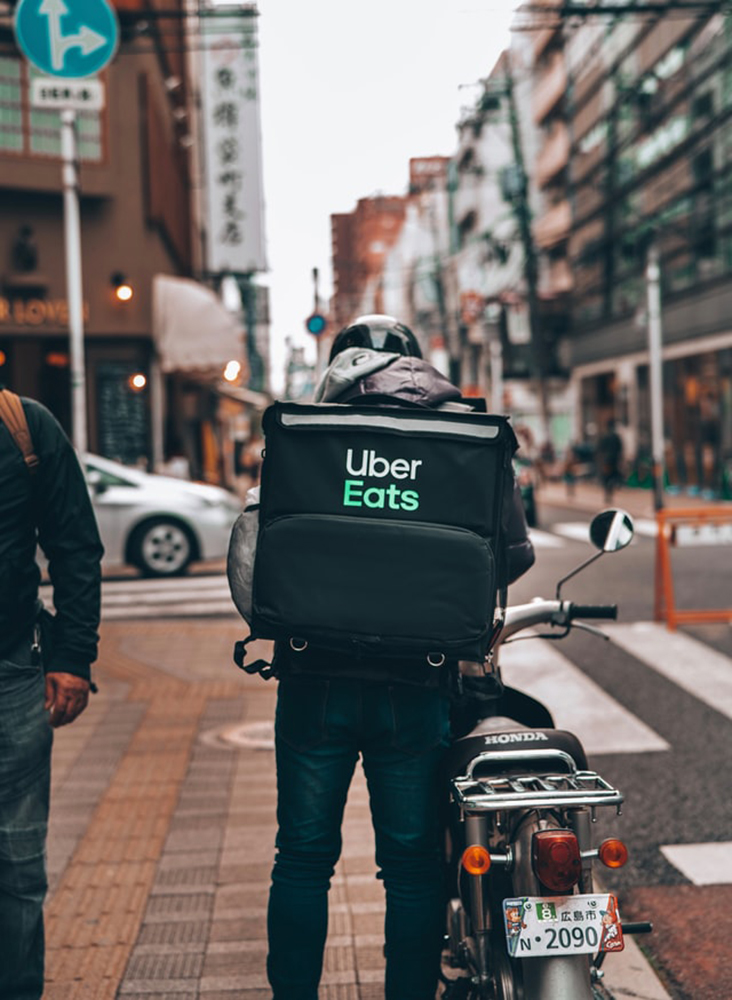


Restaurants have undoubtedly taken on one of the biggest hits during this global pandemic and continue to as nations’ re-openings begin. Pre-pandemic, the demand for food delivery has dramatically increased. Fast forward to now, and that demand has only skyrocketed, interpreting what embodies a restaurant to be very flexible. Should the space I’m renting include a dining room? Is there a need to have a waitstaff? Do we even need tables or chairs? These are common questions many restaurant owners are now asking themselves as delivery options have become the preferred way of dining in the last six months.
Many restaurants have barely been able to survive solely based on delivery options and outdoor seating, but what will happen when the weather starts to turn? Ghost kitchens (commonly known as dark kitchens, cloud kitchens, or virtual kitchens) can cut back on expenses like location, labor, and menu innovation, by compressing the restaurant model to accommodate off-ground food sales without a traditional dine-in space. Instead of enjoying your favorite meal inside the restaurant, the customer would need to rely on deliveries made by the restaurant or by a third-party delivery service. During this pandemic, Technomic, a consulting firm that works with the restaurant industry, estimates that 20 to 25% of independently owned restaurants will never reopen again.
Third-party delivery apps like Postmates, GrubHub, and UberEats have grown 300% faster than dine-in traffic since 2014. However, 70% of consumers would rather order directly from a restaurant, ensuring their money directly supports them and not a third party business. And while that’s great, it’s been shown that working with a third party delivery service raises restaurant sales volume by 10 to 20%.
From this pandemic, we are starting to see a huge paradigm shift in how restaurants get started, especially in how they operate. These times are unprecedented and we’re now seeing a decade of change in a matter of months. Ghost kitchens are a great way to get a greater return on fixed costs, run multiple concepts in a single location, and allow for innovation with restaurateurs such as launching a new concept solely for delivery apps. While this might not be the preferred method of enjoying an experience, the delivery revolution has made way for entirely new types of businesses to be possible yet manageable.
この世界的に起こっているパンデミックでレストランは間違いなくこれまでで最大の大打撃を受け、それは国々が再開する今もなお続いています。 そしてこのパンデミック前と比べると食品配達の需要は劇的に増加しました。 そして現在の動向をみると、その需要は急増しており、レストランも非常に柔軟性が求められています。 借りているスペースにはダイニングルームを含めるべきですか? 給仕が必要ですか? テーブルや椅子も必要ですか? これらは、デリバリー形式が過去6か月で好ましい食事の方法になっているため、多くのレストランの所有者が現在自問している一般的な疑問です。
多くのレストランは、デリバリーと屋外席だけでなんどか生き延びてきていますが、この先天気が変わり始めるとどうなりますか? ゴーストキッチン(一般にダークキッチン、クラウドキッチン、または仮想キッチンとして知られています)は、レストランモデルを圧縮して、従来の食事スペースなしでオフグラウンドの食品販売に対応することにより、場所、労力、メニューの革新などの費用を削減できます。 顧客は、レストラン内でお気に入りの食事を楽しむ代わりに、レストランまたはサードパーティの配達サービスによる配達に頼る必要があります。 このパンデミックの間、Technomic、協力するコンサルティング会社、レストラン業界は、独立所有のレストランの20〜25%が二度と再開しないと推定しています。
Postmates、GrubHub、UberEatsなどのサードパーティの配達アプリは、2014年以降、外食トラフィックよりも300%速く成長しています。ただし、 消費者の70%はむしろレストランに直接注文し、彼らのお金が第三者のビジネスではなく彼らを直接サポートすることを望んでいます。 それは素晴らしいことですが、サードパーティの配送サービスと連携すると、レストランの販売量が10〜20%増加することが示されています。
このパンデミックから、特にレストランの運営方法に大きなパラダイムシフトが見られ始めています。これらは前例のないものであり、今では数か月のうちに10年の変化が見られます。ゴーストキッチンは、固定費の見返りを増やし、1つの場所で複数のコンセプトを実行し、配信アプリ専用の新しいコンセプトを立ち上げるなど、レストラン経営者とのイノベーションを可能にする優れた方法です。これは好ましい方法ではないかもしれませんが、配信革命により、まったく新しいタイプのビジネスが可能で、かつ管理がしやすくなりました。